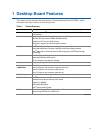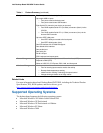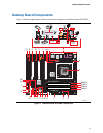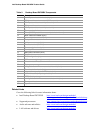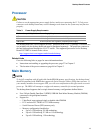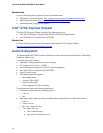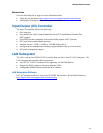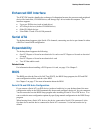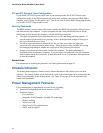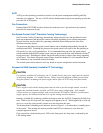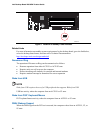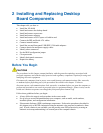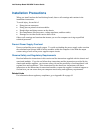Desktop Board Features
17
Enhanced IDE Interface
The ICH7 IDE interface handles the exchange of information between the processor and peripheral
devices like hard disks, CD-ROM drives, and Iomega Zip* drives inside the computer. The
interface supports:
• Up to two IDE devices (such as hard drives)
• ATAPI-style devices (such as CD-ROM drives)
• Older PIO Mode devices
• Ultra DMA-33 and ATA-66/100 protocols
Serial ATA
The desktop board supports eight Serial ATA channels, connecting one device per channel in either
a RAID or a non-RAID configuration.
Expandability
The desktop board supports the following:
• One PCI Express x16 card as an electrical x16 card or two PCI Express x16 cards as electrical
x8 cards
• One PCI Express x16 card as an electrical x4 card
• Two PCI bus add-in cards
Related Links
For information about installing a PCI Express x16 card, see page 35 in Chapter 2.
BIOS
The BIOS provides the Power-On Self-Test (POST), the BIOS Setup program, the PCI and IDE
auto-configuration utilities, and the video BIOS.
See Chapter 3 on page 57 for more information about the BIOS.
Serial ATA and IDE Auto Configuration
If you connect a Serial ATA or IDE device (such as a hard drive) to your desktop board, the auto-
configuration utility in the BIOS automatically detects and configures the device for your computer.
You do not need to run the BIOS Setup program after installing a Serial ATA or IDE device. You
can override the auto-configuration options by specifying manual configuration in the BIOS Setup
program.
When booting from a Serial ATA device, the device connected to Serial ATA connector 0 is the
first boot device and the device connected to Serial ATA connector 3 is the last boot device by
default.



